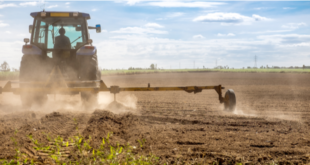Governor Gavin Newsom expanded his April 21 drought emergency proclamation Monday to include the Klamath River, Sacramento-San Joaquin Delta and Tulare Lake Watershed counties where accelerated action is needed to protect public health, safety and the environment. In total, 41 counties are now under a drought state of emergency, representing 30 percent of the state’s population.
Climate change-induced early warm temperatures and extremely dry soils have further depleted the expected runoff water from the Sierra-Cascade snowpack, resulting in historic and unanticipated reductions in the amount of water flowing to major reservoirs, especially in Klamath River, Sacramento-San Joaquin Delta and Tulare Lake Watershed counties.
“With the reality of climate change abundantly clear in California, we’re taking urgent action to address acute water supply shortfalls in northern and central California while also building our water resilience to safeguard communities in the decades ahead,” said Governor Newsom. “We’re working with local officials and other partners to protect public health and safety and the environment, and call on all Californians to help meet this challenge by stepping up their efforts to save water.”
About 98% of California is currently experiencing drought conditions, according to the US Drought Monitor, with nearly 75% of the state seeing extreme drought conditions. Droughts have been intensifying, especially in the West and Southwest US, according to the latest National Climate Assessment, with climate change playing a key role in the scarcity of water in the West.
The Governor’s proclamation directs the State Water Board to consider modifying requirements for reservoir releases and diversion limitations to conserve water upstream later in the year to maintain water supply, improve water quality and protect cold water pools for salmon and steelhead. The state of emergency also enables flexibilities in regulatory requirements and procurement processes to mitigate drought impacts and directs state water officials to expedite the review and processing of voluntary transfers of water from one water right holder to another, enabling available water to flow where it is needed most.
“It’s time for Californians to pull together once again to save water,” said California Natural Resources Agency Secretary Wade Crowfoot in a statement. “All of us need to find every opportunity to save water where we can: limit outdoor watering, take shorter showers, turn off the water while brushing your teeth or washing dishes. Homeowners, municipalities, and water diverters can help by addressing leaks and other types of water loss, which can account for over 30 percent of water use in some areas.”
 California Water News Daily Your Source For Water News in California
California Water News Daily Your Source For Water News in California


